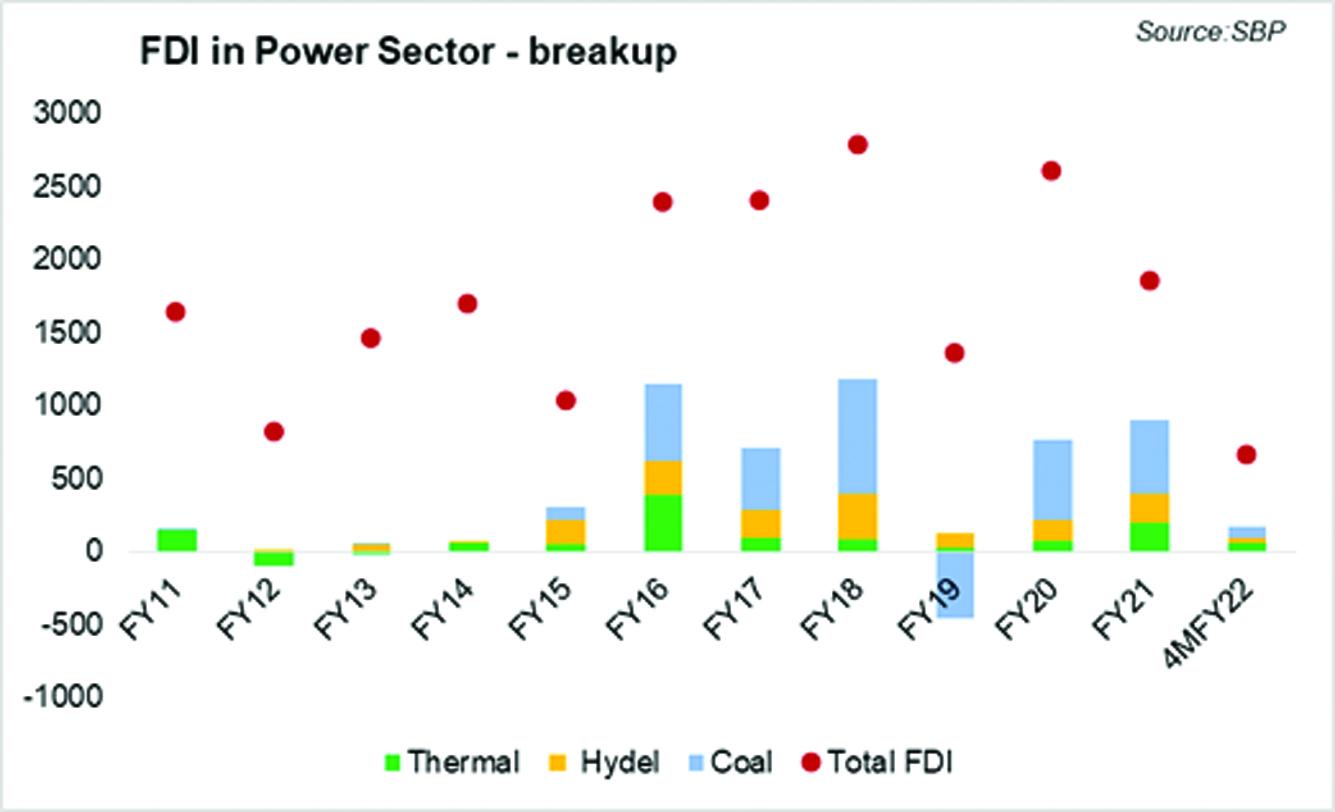The country might have announced its objective to increase the share of renewable energy to 30 percent by 2030 along with other steps to diversify the energy portfolio, its foreign direct investment policy doesn’t seem to be promoting and selling the potential of renewable and alternate energy in the country. Mind you, changing the energy mix and diversifying the portfolio to include clean sources of power generation significantly for a developing country requires capex – much of which also come from foreign investors.
The current energy mix has thermal power generation at the top with a share of 60 percent followed by hydel, nuclear, coal and then around two percent that of renewable energy. FDI in the power sector has historically rested with thermal power plant with the IPP policies offering extravagant returns and incentives. China Pakistan Economic Corridor (CPEC) brought a shift towards coal power generation with Chinese investment in the power sector making a lion’s share in total FDI. Power sector in the last six years until FY21 has had on average a share of 30 percent in total FDI with coal investments making up majority of the total power sector FDI.

However, as the early harvest CPEC projects and power plants have concluded, and as the world is giving up on coal investments including China, FDI in power sector has declined - affecting not only the sector’s share in FDI but also total FDI inflows.

Whether there is an opportunity for improvement of flows in the sector now depends on attracting FDI in other sources particularly renewable and alternate energy –clubbed as clean energy in the wake of rising climate change awareness and initiatives among key investing countries. China, a key investor in Pakistan has also halted all its coal investments abroad. Not only that; it is ambitiously transitioning locally; as well as in its global investments toward green future. This offers an incentive to Pakistan to attract FDI in renewable energy from its key investor. In the region, it is showing interest in Bangladesh where one of its developers has offered $50 million for renewables against freeing up of land. On the other hand, India’s renewable energy has attracted $70 billion in the last 7 years.

Pakistan needs over 20,000 MW of solar and wind energy if it wants to achieve its 2030 target of 30 renewable energy target. It needs to diversify its power sector foreign investment portfolio among other sectors. While some projects are in the pipeline, the sector has not been able to attract investment. Lack of incentives, bureaucratic hurdles, land acquisition, red tapism, delayed approval, weaknesses in the policies along with presence of a strong conventional fossil fuel market are hurdles for investors. And Chinese investors have particularly witnessed these challenges in the power sector.





















Comments
Comments are closed.